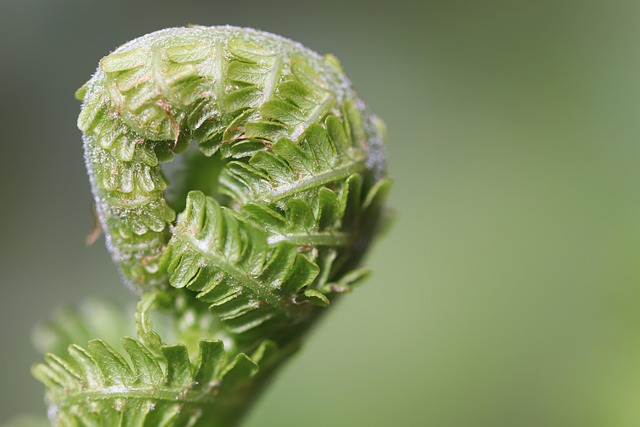Why Low-Maintenance Landscaping Matters
Time is limited, and most homeowners don’t want to spend their weekends pulling weeds or fiddling with sprinklers. Your outdoor space should work for you, not against you. That’s where low-maintenance landscaping comes in—it saves time, money, and constant upkeep.
The goal isn’t to sacrifice beauty. It’s to build a yard that looks great without demanding your attention year-round. Smart landscaping systems take care of themselves, or at least ask very little of you in return. Choose the right materials, plants, and layout, and your yard can practically run on autopilot.
The foundation of low-maintenance design comes down to three things: sustainability, simplicity, and function. Sustainable means using resources wisely—less water, fewer chemicals. Simplicity keeps things manageable and clean. And functional landscapes aren’t just pretty—they’re built around your daily life and how you actually use the space. It’s not about doing less for the sake of it; it’s about doing less where it doesn’t count, so your energy goes into the parts of life that do.
Go Native: Plants That Take Care of Themselves
If you’re after a low-effort yard, start with native plants. They’ve evolved to handle the local weather, soil, and pests—so they won’t flinch at a dry spell or heat wave. Native species are tough, drought-tolerant, and built for survival. Translation: you don’t have to baby them.
What you plant depends on where you live. In the Southwest, look to desert marigold, red yucca, or agave. Midwest? Try purple coneflower, prairie dropseed, or wild bergamot. Southeast growers might reach for black-eyed Susans or dwarf palmettos. The point is: skip the trendy imports and pick what thrives in your backyard, not someone else’s rainforest.
Designing with natives doesn’t mean you sacrifice looks. A layered mix of perennials, grasses, and shrubs gives texture and color for most of the year. Add mulch and smart spacing, and you’ll cut the need for watering, trimming, and weed-pulling way down. With the right setup, your landscape can pretty much run itself.
Say Goodbye to High-Maintenance Lawns
Traditional grass is a time sink. It drinks water like it’s free, demands constant mowing, and loves expensive fertilizer. If you’re done with the weekly grind, it’s time to swap your turf for something smarter.
Clover is making a comeback. Unlike regular grass, it stays green through droughts, fixes its own nitrogen (so no need to fertilize), and handles foot traffic better than you’d think. No-mow fescue is another strong option—soft, lush, and only needs trimming a couple times a season. Then there’s artificial turf. It doesn’t need water, never goes yellow, and works especially well in small spaces or shaded yards where grass barely survives.
Whichever route you choose, pairing your lawn alternative with clean, low-profile edging keeps everything looking sharp. Steel, stone, or composite edging can define beds and paths without fraying or fuss. It’s a small touch that saves time and makes everything look intentional.
Less watering. Less mowing. More time enjoying your yard, not managing it.
Mulch: The Unsung Hero of Lazy Landscaping
If you’re looking to cut yard work to a minimum without sacrificing curb appeal, mulch is one of the most effective tools in your low-maintenance landscaping toolkit. It delivers more than just aesthetics—proper mulching protects your plants, conserves water, and keeps weeds in check.
Why Mulch Deserves a Starring Role
Mulch offers several benefits that make it ideal for low-effort landscaping:
– Suppresses Weed Growth: A thick mulch layer blocks sunlight, naturally minimizing unwanted seedlings.
– Retains Soil Moisture: Mulch reduces evaporation, decreasing the need for frequent watering.
– Improves Soil Health: Organic options break down over time, enriching the soil.
– Refines Curb Appeal: Clean lines and uniform ground cover give your yard a finished, professional look.
Best Mulch Types for a Low-Key Yard
Not all mulch is created equal, especially when you’re aiming for set-it-and-forget-it landscaping. Here are the top picks for minimal upkeep:
– Shredded Bark or Wood Chips: Long-lasting and visually clean, great for most garden beds.
– Pine Needles: Best for acidic soils and doesn’t compact as it settles.
– Rubber Mulch: A non-organic option that doesn’t decompose or need regular replacement.
– Gravel or Stone: Ideal for xeriscaping or modern aesthetics—no decay, no fuss.
Tip: Avoid dyed or colored mulches unless you’re willing to refresh them yearly. They tend to break down faster and may leach dyes into the soil.
Simple Mulching Tips for Trees and Plant Beds
To get the most out of your mulch, placement and depth matter. A few quick guidelines:
– Depth: Aim for 2–4 inches deep—thick enough to suppress weeds, but not so deep that roots suffocate.
– Mulch Donut, Not Volcano: Keep mulch a few inches away from a tree’s trunk to prevent moisture buildup and rot.
– Replenish Sparingly: Refresh mulch once a year in early spring or late fall; remove degraded materials only when necessary.
By choosing the right mulch and applying it strategically, you can spend less time working in your yard and more time enjoying it.
Hardscaping That Works Hard for You
Good hardscaping means less fuss, more function. Gravel paths and paver patios don’t just look intentional—they also hold up with minimal effort. A quick rake or hose-down and they’re back to looking sharp. Same goes for rock gardens. With the right mix of stone and low-water plants, you get structure and style that won’t need constant babysitting.
Raised beds and tidy borders are another smart move. They bring plants up to a more comfortable working height and keep things contained. You’ll bend less, prune less, and still get clean lines with way less maintenance. Bonus: they make watering and soil control easier too.
For nights, keep it simple. Solar lights or low-voltage LEDs tucked along paths or under benches create a warm, easy glow—no wiring headaches, no on-off switches. Set them and forget them. The key with lighting is placement, not power. A few well-placed lights beat a flood of fixtures any day.
Built-In Pest and Weed Control
Some landscapes fight their own battles—if you plant them right.
For starters, a few classic plant pairings do more than look good. Marigolds next to tomatoes? Good move. They repel nematodes and aphids. Lavender, mint, and rosemary? Their strong scents confuse pests and keep mosquitos at bay. Nasturtiums attract aphids away from your main crops, basically acting as decoys. These combinations reduce the odds of infestations before you even reach for a natural spray.
Now, let’s talk weeds. Covering bare soil with ground-hugging plants is an easy win. Creeping thyme, sweet woodruff, or low-growing sedums create dense mats that leave no space for weeds to poke through. They also lock in moisture, cutting down on your watering duties.
As for preventative strategies, don’t skip the basics. Keep tools clean. Don’t overwater—that’s an open invite for fungus gnats. Rotate crops if you’re gardening. And plant in healthy soil with good drainage. A strong start makes for fewer problems down the road.
Less reacting. More planning. That’s the low-maintenance way to deal with pests and weeds.
(For more natural tips: Pest Control: Natural Remedies for Healthy Plants)
Smart Irrigation: Set It and Forget It
Watering your yard doesn’t have to be a daily to-do. Drip systems and soaker hoses offer a simple fix—they deliver water right where it’s needed, slow and steady. That means less waste, fewer weeds, and no more dragging hoses around after work.
For even less hassle, add in a timer or rain sensor. Basic models are cheap, easy to install, and smart enough to skip a watering cycle if there’s been a recent downpour. Pair that with zones tailored to plant needs—sunny spots, shady beds, or thirsty veggies—and you’ve got a setup that runs itself.
The key is designing with efficiency from the beginning. Group plants with similar watering needs. Keep lines as short and direct as possible. Tuck hoses under mulch to prevent evaporation. Once it’s dialed in, your irrigation system becomes background noise—doing its job while you do literally anything else.
Seasonal Strategies That Pay Off Year-Round
Low-maintenance landscaping isn’t just about daily convenience—it’s about thinking seasonally. With the right plant choices and a bit of planning, your yard can look great 12 months a year with minimal effort.
What to Plant (and When)
Some plants thrive with very little intervention—as long as they’re planted at the right time of year. Good timing leads to better root systems, healthier growth, and less need for chemical or manual intervention later on.
– Spring: Plant drought-tolerant perennials like black-eyed Susan, yarrow, and daylilies. These establish quickly and return with little coaxing.
– Summer: Focus on ground covers such as creeping thyme or sedum that resist heat and smother weeds.
– Fall: Ideal for trees and shrubs. Cooler temps and reliable rain help young plants root deeply without excess watering.
– Winter (in mild climates): Use this time to plant hardy evergreens that offer structure year-round.
Trees and Shrubs That Don’t Demand Constant Pruning
Choose plant varieties that grow into natural, well-shaped forms without constant maintenance. This saves hours of shearing and reshaping—not to mention reducing green waste.
Low-maintenance tree and shrub picks include:
– Japanese maple: Slow-growing with minimal shaping needed
– Boxwood (dwarf varieties): Holds form naturally
– Serviceberry: Multi-season interest and doesn’t need frequent trimming
– Hydrangea paniculata (e.g., ‘Limelight’): Resilient and typically needs just one trim per year to stay tidy
One-and-Done Trimming
You don’t need to prune constantly. Focus on plants that only need to be cut back once a year—usually in late winter or early spring.
– Ornamental grasses (like feather reed or switchgrass): Cut down to the ground before spring growth
– Lavender: Prune back 1/3 in early spring for bushier growth
– Russian sage: A hard prune in spring keeps it upright and fresh-looking
One solid session beats a season of snipping. With the right selections, a few hours of effort once per year will keep things neat and thriving.
Tip: Always use clean, sharp tools when pruning. Healthy cuts reduce the chance of disease and improve overall plant performance.
Final Tips for a Simple, Beautiful Yard
Low-maintenance landscaping isn’t just about what grows well in your zip code—it’s about what fits into your life. Got three kids and a job that eats your weekends? Skip the delicate roses and time-sucking koi pond. Opt for plants that don’t beg for attention and features that look good even when you forget they’re there. Your schedule is the real climate you’re working with.
Sometimes, calling in pros makes sense—but only the right kind. Find ones who listen when you say “easy upkeep” and don’t respond with a 15-tab spreadsheet. A solid landscaper should simplify, not over-engineer. Avoid contractors pushing exotic plant packages or complex irrigation setups unless you’re really up for maintenance, because someone’s gotta manage that system once they’re gone. (Hint: it’s you.)
Finally, don’t confuse “low-maintenance” with “no-effort.” You still need to show up—just less often, and more strategically. Trim what’s worth trimming. Water when it actually counts. The real secret? Investing your energy where it makes a visible and lasting difference. Everything else can wait.




